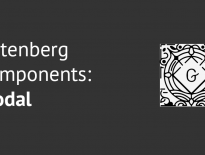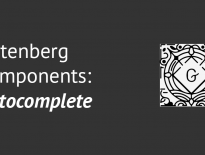Picking colors for various parts of a WordPress site is a popular thing. Many plugins and themes have such options so users can customize the appearance of their site.
This Gutenberg Component can be found in the repository.
ColorPicker Properties
There are not a lot of properties for the ColorPicker since it is a quite simple component which does one thing only; picking a color 🙂
- color – the color that we provide as the default/initial color
- className – if provided, it will add the CSS class to the element alongside other classes
disableAlpha – this does not need a value at all. Just put it as a property and it will disable the alpha color picker- onChangeComplete – this is the function that you will use to handle the color change. You can then applying to other components of your block or anywhere else.
The function provided in onChangeComplete property will receive an object as a color which will have this attributes:
- color – Hex value of the color
- hex – transparent or #hexColor
- hsl
- hsv
- rgb,
- source,
- oldHue – reference to the previous color hue
Default Classes
The default classes that you can use to change the component design are:
- components-color-picker,
- is-alpha-disabled – applied if the property disableAlpha is provided,
- is-alpha-enabled – applied if the property disableAlpha is not provided.
Using the ColorPicker Component
Since this is a Gutenberg Component, it will be available on a page with the Gutenberg editor by using:
const { ColorPicker } = wp.components
Let’s consider wrapping the ColorPicker Component with our own dumb component. Maybe we have a naming convention that we want to follow and for example, onChange is used everything. By using that, the property onChangeComplete is not following that naming convention.
We created a wrapper, a function, that returns the same ColorPicker components. We then accept the property onChange and use that in the place of onChangeComplete.
How Gutenberg uses the ColorPicker Component
Since this component is a simple one and it’s usage is pretty straightforward, you don’t really have to search on how Gutenberg has implemented it. But it is always nice to see how the developers who created this component, use it in their own app.
I’ve found out that ColorPicker is being used by the component ColorPalette. Since the code is a bit longer here, I will paste only the part where ColorPicker is used. For the whole code of it, you can check the repo.
Conclusion
This is a component that I think it will be used a lot by other blocks. I can even see it being used in separate apps that utilize the Gutenberg packages for creating UIs.
Become a Sponsor



Hello
Please help me understand, I don’t understand how to embed Gutenberg components in blocks, namely in the structure itself … For example, here is such a code – https://paste.ubuntu.com/p/xWq6mSnYCs/
If I saw an example of how this is done, then I could freely work with blocks and create them without problems. I need to see an example … I created a topic at https://wordpress.org/support/topic/help-understand-how-to-embed-components-in-blocks/
thank you in advance
The code you’ve pasted here should be fine so that’s a good example to learn from.
I would suggest you to go over the Gutenberg handbook for developers: https://developer.wordpress.org/block-editor/developers/
I found a solution to my problem here – https://rudrastyh.com/gutenberg/inspector-controls.html. And I re-read the documentation 10 times all lengthwise and across